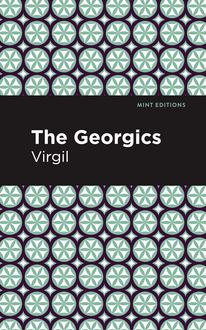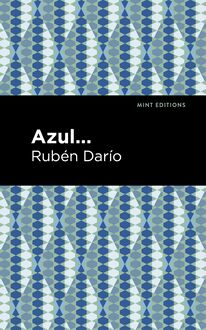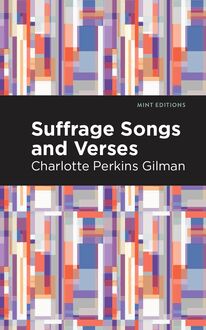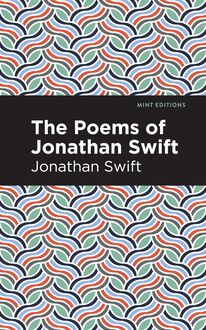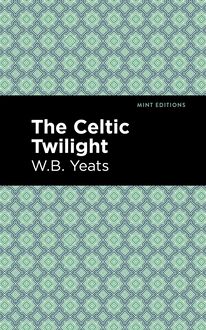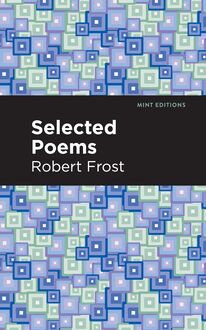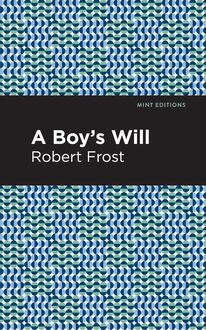-
 Univers
Univers
-
 Ebooks
Ebooks
-
 Livres audio
Livres audio
-
 Presse
Presse
-
 Podcasts
Podcasts
-
 BD
BD
-
 Documents
Documents
-
- Cours
- Révisions
- Ressources pédagogiques
- Sciences de l’éducation
- Manuels scolaires
- Langues
- Travaux de classe
- Annales de BEP
- Etudes supérieures
- Maternelle et primaire
- Fiches de lecture
- Orientation scolaire
- Méthodologie
- Corrigés de devoir
- Annales d’examens et concours
- Annales du bac
- Annales du brevet
- Rapports de stage
La lecture à portée de main
Vous pourrez modifier la taille du texte de cet ouvrage
Découvre YouScribe en t'inscrivant gratuitement
Je m'inscrisDécouvre YouScribe en t'inscrivant gratuitement
Je m'inscrisEn savoir plus
Vous pourrez modifier la taille du texte de cet ouvrage
En savoir plus

Description
Martín Fierro: An Epic of the Argentine (1923) is an epic poem and accompanying scholarship by José Hernández and Henry A. Holmes. Originally published in two parts, the poem has been praised as a defining work of Argentine literature for its depiction of national identity in relation to the gaucho culture, which was used to consolidate the historical and political image of the country against European influence. Unlike many of his contemporaries, Hernández was a writer who grew up in a ranching family, who knew firsthand the prowess of a people who helped Argentina free itself from Spanish control.Martín Fierro is a masterpiece of Spanish-language literature that continues to define and inform Argentine culture today. In this text, scholar Henry A. Holmes translates parts of the poem while contextualizing it alongside works of Hernández’s predecessors. In addition, Holmes provides invaluable information on the poet’s life, discusses the significance of the gaucho in Argentine literature, and investigates the portrayal of the indigenous peoples of Argentina in the poem. With a beautifully designed cover and professionally typeset manuscript, this edition of José Hernández and Henry A. Holmes’ Martín Fierro: An Epic of the Argentine is a classic of Argentine literature reimagined for modern readers.
Sujets
Informations
| Publié par | Mint Editions |
| Date de parution | 21 mai 2021 |
| Nombre de lectures | 0 |
| EAN13 | 9781513287560 |
| Langue | English |
| Poids de l'ouvrage | 1 Mo |
Informations légales : prix de location à la page 0,0400€. Cette information est donnée uniquement à titre indicatif conformément à la législation en vigueur.
Extrait
Martín Fierro
An Epic of the Argentine
Henry A. Holmes and José Hernández
Martín Fierro: An Epic of the Argentine was first published in 1923.
This edition published by Mint Editions 2021.
ISBN 9781513282541 | E-ISBN 9781513287560
Published by Mint Editions®
minteditionbooks.com
Publishing Director: Jennifer Newens
Design & Production: Rachel Lopez Metzger
Project Manager: Micaela Clark
Typesetting: Westchester Publishing Services
To
My Wife
C ONTENTS P REFACE I. T HE G AUCHO II. A S URVEY OF A RGENTINE G AUCHO L ITERATURE The Predecessors of José Hernández III. A S URVEY OF A RGENTINE G AUCHO L ITERATURE Contemporaries and Successors to José Hernández IV. T HE L IFE AND W RITINGS OF H ERNÁNDEZ V. T HE S TORY OF “M ARTÍN F IERRO ” VI. T HE G AUCHO IN “M ARTÍN F IERRO ” VII. T HE I NDIANS VIII. T HE L ITERARY V ALUE OF “M ARTÍN F IERRO ”
P REFACE
My acquaintance with Martín Fierro dates from November of 1917, when I was living in Montevideo, Uruguay. In Argentina, during the years 1918–1920, I had more than one opportunity of seeing the present-day Argentine plainsmen, and the pampa over which the real gauchos had raced their steeds. Of all the themes which a three years’ residence in that land of promise suggested to me as worthy of literary treatment, that of Martín Fierro has assumed ever more significant proportions, and now I present these cowboys of the South, and their spokesman Mart í n, to a North American reading public.
I have to thank many friends and acquaintances in the River Plate region, for their assistance in my studies. Professor Ricardo Rojas, of the Buenos Aires University, an authority on Argentine literature, gave me a memorable interview, in which many Fierro problems were thoroughly discussed. The treatment of Martín Fierro in Rojas’ Historia de la Literatura Argentina is unsurpassed, and has very considerably influenced me. My friends and assistants in the American College of Buenos Aires, Sr. Pedro D. Viera, and Srta. Emma Day, were most helpful in furnishing material. Professor J. L. Gerig of Columbia University deserves warm thanks, as does also Professor H. A. Todd, not only for his constant encouragement, but also especially for his reading of the book in manuscript and in proof. I cannot be sufficiently grateful to Dr. Federico de On í s, Professor of Spanish Literature in Columbia University, for his suggestions, criticism, and unremitting interest in the work. To my wife, without whose sympathetic co-operation the book probably would never have been written, I thankfully acknowledge my indebtedness. With all its shortcomings, it is an enthusiastic tribute to a land which we both love.
H. A. H.
New York University,
February, 1923
I
T HE G AUCHO
In 1893, at the World’s Folk-Lore Congress at Chicago, a brilliant Argentine writer presented a hitherto practically unknown personage to the American public—the gaucho of the pampas. Today, to introduce Mart í n Fierro, counterpart of our North American cowboy of the West, who is the supreme incarnation of the gaucho type, I can do no better than quote, in English translation, the following brief paragraphs from that appreciative address. 1
“The gaucho is a wanderer, a prodigal son of society. Born in some rancho of the Argentine pampa, a branch soon severed from the parent trunk, raised on horseback, he learns from boyhood days to struggle and to suffer. He matures, face to face with impassive nature, holding always this notion: that he should not and cannot rely on anyone but himself alone…
“An infinitesimal speck in the midst of that emptiness which for him is the whole universe, like the Mohican (i.e., Uncas, in the novel by Fenimore Cooper) he has every sense sharpened as though it were an indispensable weapon: has acquired the hearing and scent of a wild animal, the keen vision of a falcon; and he likewise possesses that bodily insensibility, that resistance to cold and hunger, that faculty of enduring pain and healing his injuries, characteristic of lower organisms …
“He ‘hires out’ on some estancia (great cattle ranch, as we use the term ‘ranch’), but almost never for long; since he prefers to wander in quest of festivity, brandings, and races, urged by the incurable desire for adventure and the homesickness for the desert. Indolent and a spend-thrift, what money he earns slips through his fingers.
“With all his vices and peccadilloes, one always comes to love him, for he is frank, brave, hospitable, very loyal, and even ingenuous beneath his hirsute exterior.”
Sarmiento 2 calls him the “Hawkeye,” the “Trapper” of Cooper, with all the frontiersman’s knowledge of the plains, with all his aversion to the cities of the white man. “Mysterious personage! his home is on the pampa… This man is (often) divorced from society and proscribed by law… but he is not a bandit.”
Ascasubi, 3 an Argentine poet who knew and loved the typical gaucho, thus describes him:
“The gaucho inhabits the Argentine plains: he is an extraordinarily expert horseman, cattleman, and all-round ranchman. As a rule, he is poor, but independent, because of his very poverty and few requirements; he is hospitable, profoundly intelligent and shrewd, physically alert, of few words, wise and energetic in action. In communicating with strangers he shows great caution. In beliefs and language, he has a vast fund of romance and superstitions. Nothing could surpass his ability to traverse alone the immense Argentine deserts, with no other equipment than his lasso and bolas (cf. Chapt. VI), obtaining food, horses, and whatever else he may need.”
General Mansilla, a soldier and traveller who knew Argentina and the Argentines better than most, has this to say: 4
“The true gaucho is the wandering creole: a gambler, a fighter, and a foe to all discipline. He flees from compulsory military service when it is his turn, he escapes to the Indians if he stabs anyone, and joins the uprising if there is any to join.”
From the foregoing, the reader will understand that the gaucho is neither an artisan nor an artist. His occupation takes him away from cities and the sea. Trade, industry, schools—he is inclined to despise all these. In the first half of the nineteenth century, the Argentine Provinces of Buenos Aires, Santa F é , Entre R í os, and Corrientes called the gaucho to essential and often highly specialized tasks. Since good grazing was the rule, the raising of cattle was not merely the occupation of the inhabitants of those provinces, but also their means of subsistence. 5 Those of us who have thrilled at the tale of innumerable buffaloes in the old Far West, or of strenuous days for the cow-punchers on Texas or Wyoming ranches, should be able to imagine the grassy Argentine pampas covered with cattle, horses, and sheep, and enlivened by gaucho centaurs. And externally, the lives of the respective “cowboys” of the two continents were much alike. On the pampas, as in Texas, there were always cattle to brand, grazing to be provided, calves and yearlings to protect, beeves to slaughter, horses to tame, sheep to shear and “corral.” Where thousands or even scores only of animals were maintained, there was always a demand for dressers of hides, repairers of harness and weapons, builders of houses, walls, and gates. Though the provinces named were then little interested in agriculture, some fields had to be sown, gardens cultivated, ditches and wells dug, and trees saved from the locusts.
But all else pales beside the importance attached to “breaking” horses and coping with wild steers. Here the gaucho truly approved himself. If vaulting ambition spurred him on to strive for further palms, he might become a baquiano, or guide-scout, perfectly at home in twenty thousand square leagues of plain, forest, and mountain! 6 Such a gaucho was Fructuoso Rivera, an Uruguayan general in the period we are considering; such the far-famed tyrant of Argentina, Juan Manuel Rosas, who could tell in darkest night, by the taste of the grass, to what part of the trackless Buenos Aires pampa he had come. Or our gaucho might aspire to be a rastreador or trailer, a human bloodhound, an Argentine Uncas. There was no lack of occupation for gauchos in those brisk days!
Were the gauchos to find themselves always in demand? We shall see! …
Nothing more inevitable than that the plainsman should react to his environment. About him stretched the desert. “Everywhere is immensity: immense the plain, immense the forests, gigantic the rivers, the horizon ever misty, mingling with the earth in thin vapors and scudding clouds. Members (sc. of a caravan) involuntarily turn their gaze southward at the slightest whisper of the wind through the dry grass… in the deepest shades of night seeking to discern the sinister outlines of savage, stalking hordes.” 7
It would seem that every thought of a being placed in an arena so gigantic, must of necessity be colored, if not suggested, by the sublimity of the scene. But like the sailor, the gaucho has his trivialities. Many, too, of his more serious thoughts were loaded with superstition, distorted by wildest fantasies. Like the animal life by which he was surrounded, he was reared by instinct. And amid these deadly perils, as well as in his stirring daily tasks, the gaucho came to rely upon and love his horse—his unfailing associate, deliverer, friend. Man and beast together lived “close to Nature’s heart.”
His dealing with elemental forces profoundly affected not only his demeanor and mental states, but also his appearance. Bunge’s picture 8 of him emphasizes the influence of environment:
“He was strong and handsome; olive-complexioned, bronzed by the out-of-doors; of medium height; wrinkled as a mystic; with thick, knotted muscles testifying to his rude daily tasks. His piercing black eyes were wont to plumb the depths of desert perspectives. Horsed, he was a centaur. On foot, he made a less striking appearance, havi
-
 Univers
Univers
-
 Ebooks
Ebooks
-
 Livres audio
Livres audio
-
 Presse
Presse
-
 Podcasts
Podcasts
-
 BD
BD
-
 Documents
Documents
-
Jeunesse
-
Littérature
-
Ressources professionnelles
-
Santé et bien-être
-
Savoirs
-
Education
-
Loisirs et hobbies
-
Art, musique et cinéma
-
Actualité et débat de société
-
Jeunesse
-
Littérature
-
Ressources professionnelles
-
Santé et bien-être
-
Savoirs
-
Education
-
Loisirs et hobbies
-
Art, musique et cinéma
-
Actualité et débat de société
-
Actualités
-
Lifestyle
-
Presse jeunesse
-
Presse professionnelle
-
Pratique
-
Presse sportive
-
Presse internationale
-
Culture & Médias
-
Action et Aventures
-
Science-fiction et Fantasy
-
Société
-
Jeunesse
-
Littérature
-
Ressources professionnelles
-
Santé et bien-être
-
Savoirs
-
Education
-
Loisirs et hobbies
-
Art, musique et cinéma
-
Actualité et débat de société
- Cours
- Révisions
- Ressources pédagogiques
- Sciences de l’éducation
- Manuels scolaires
- Langues
- Travaux de classe
- Annales de BEP
- Etudes supérieures
- Maternelle et primaire
- Fiches de lecture
- Orientation scolaire
- Méthodologie
- Corrigés de devoir
- Annales d’examens et concours
- Annales du bac
- Annales du brevet
- Rapports de stage
